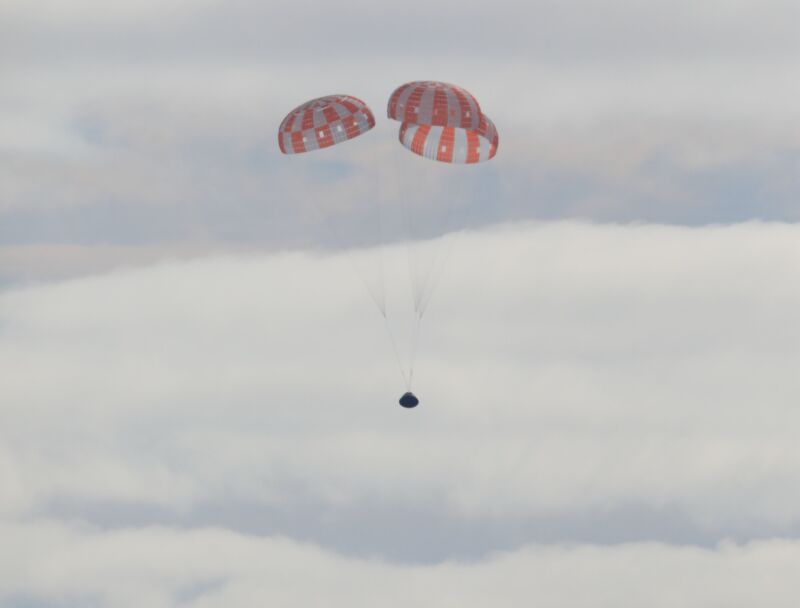
About three months have passed since NASA's Orion spacecraft splashed down into the Pacific Ocean after a flight beyond the Moon and back. At the time, the space agency said the Artemis I mission had successfully met its goals and paved the way for humans to follow suit.
This week, after carefully reviewing data from that Artemis I mission since splashdown, space agency officials reiterated that although there were a few minor issues with the flight, overall it bolstered confidence. As a result NASA's chief of human exploration for deep space, Jim Free, said the agency is targeting "late November" of 2024 for the Artemis II mission.
During this flight, four astronauts—likely including a Canadian—will spend a little more than a week in deep space. After checking out the performance of Orion in low-Earth orbit, the spacecraft will fly into what is known as a "free return trajectory" around the Moon, which will bring them as close as 7,500 km to the surface of the Moon before swinging back.
Amid much fanfare, NASA expects to name the crew of the Artemis II mission later this spring. They will be the first humans to fly beyond low-Earth orbit in more than 50 years, since the end of the Apollo Moon program in December 1972. If NASA is successful with the Artemis II mission, it will set the stage for a crewed lunar landing during the second half of the 2020s.
Orion performance
Perhaps the most notable issue discussed during the news conference was the performance of Orion's heat shield, which protects the spacecraft as it returns through Earth's atmosphere at high velocity. This represented one of the key tests during Artemis I, as vehicles returning from the Moon do so at a velocity of about 40,000 km/hour, which is about 30 percent higher than a vehicle typically returns from low-Earth orbit.
"During inspections there were more variations across the heat shield than we expected," said Howard Hu, the Orion program manager for NASA. "Some of the charred material ablated away differently than what our computer models, and what our ground testing, predicted. More of this charred material was liberated during reentry than we had expected."
A heat shield like that on Orion, and most other vehicles returning from space, is designed to burn away, or ablate, as it heats up during its flight through the atmosphere. This ablative material at the bottom of the spacecraft protects the vehicle itself and any crew inside from the extremely hot conditions outside.
In this case, there was still plenty of margin in the ablative material on Orion, meaning the unanticipated behavior seen in the heat shield posed no risk to the spacecraft. But NASA wants to refine its modeling of this behavior so it has a good handle on what to expect during future missions.
"When we have unexpected behavior, we're going to drive to find a root cause," Hu said. "I would say that we're going to be very cautious and make sure we do our due diligence. Vigilance is very important for us as we fly crew going forward."
Article From & Read More ( NASA studying unexpected performance of Orion’s heat shield ahead of crew mission - Ars Technica )https://ift.tt/QtoUTGm
Science
No comments:
Post a Comment